From inside (document excerpt):
model 7090-1 24 inch 5 h.p. perating manual and snow thrower parts list yaRD-MaN. 1410 West Ganson Street PRINTED IN U.S.A. Jackson, Michigan 49202 0611-723 RULES FOR SAFE OPERATION Your SNOW THROWER is a precision piece of snow throwing equipment. Engineering skill and experience have been combined to provide the ultimate in safety and efficiency. As with any type of power equipment, carelessness or error on the part of the operator can result in injury.
Snow Blower and Snow Thrower User Manual Free Download. Snow Removal Operator’s Manual. Free Manual Download PDF.
EXERCISE EXTREME CAUTION AT ALL TIMES. 1. READ THE OWNER’S MANUAL CAREFULLY. Know the controls to operate your SNOW THROWER properly and how to quickly stop the unit. 2. BEFORE STARTING ENGINE, disengage all clutches and shift unit into neutral. Keep hands, feet and clothing away from power driven parts. 3. DISENGAGE POWER AND STOP MOTOR before cleaning discharge, removing obstacles, making adjustments, or when leaving operating position. 4. NEVER DIRECT DISCHARGE AT BYSTANDERS nor allow anyone in front of machine – debris may be hidden in the snow. 5. KEEP CHILDREN AND PETS a safe distance away. 6. DO NOT ALLOW CHILDREN TO OPERATE MACHINE nor allow adults to operate machine without proper instruction. 7. ADJUST SCOOP HEIGHT to clear gravel or crushed rock surface. 8. EXERCISE CAUTION to avoid slipping or falling, especially when operating in reverse. 9. HANDLE GASOLINE WITH CARE – it is highly flammable. a. b. c. d. Use approved gasoline container. Never add gasoline to a running motor. Fill tank outdoors and wipe up spilled gasoline. Replace gasoline cap securely. Open doors if motor is running indoors – exhaust fumes are dangerous. 10. USE A GROUNDED THREE-WIRE PLUG-IN for all units equipped with electric starting kits. 11. KEEP UNIT IN GOOD OPERATING CONDITION and keep safety devices in place. 2 SUGGESTIONS FOR MORE EFFICIENT, and MAINTENANCEFREE OPERATION GENERAL SNOW THROWING 1. 2. Always keep area to be cleaned cleared before snowfall. Always start engine with machine on level surface with master clutch disengaged. After starting, let engine warm up several minutes at slow speed before starting to remove snow. If machine is stored indoors, let engine and machine adjust to outdoor temperatures before starting to throw snow. When throwing snow, run machine at full throttle for best results. When in deep heavy snow, shift to slowest speed, and start at the edge of area to be cleared, discharging snow to the outside. Always run engine a few minutes before storing, to dry moisture that collects inside of engine from blowing snow. NOTE: NEVER RUN ENGINE INDOORS OR IN AN ENCLOSED AREA. 3. 4. 5. , MAINTENANCE: Your SNOW THROWER like all machines with moving parts, must receive care and maintenance. The following tips, if used, will contribute many trouble-free hours to your machine. Check oil level frequently, or every 5 hours of use. When changing oil, make sure dirt and debris is cleaned from oil drain area before removing oil plug. 2. 3. 4. Keep fan and auger housings clean. Check all nuts, bolts and screws occasionally for tightness to be sure machine is in good operating condition. Should excessive vibration develop, check your fan and fan shaft immediately. Do not operate the machine with a bent fan or shaft. The machine is pre-lubricated at the factory. However, lubrication with each usage will prolong life of working parts. If you are going to store your SNOW THROWER for any length of time (30 days or longer) it is important that the following steps be taken. a. b. c. Drain the gas tank and carburetor. Start the engine and run it until out of gas. Gasoline left in the engine will leave gum deposits in the carburetor and gas tank. Clean engine of all foreign matter. Lubricate cylinder by removing the sparkplug and pouring one ounce of clean lubricating oil through the sparkplug hole into the cylinder. Crank engine slowly to spread oil and replace sparkplug. 5. 6. 7. 8. Should unusual vibration develop in transmission, remove rubber panel in rear cover and check rubber drive disc condition. For reference see page 11. The belt tension is adjustable. The tensioning of belt should be checked every 5-10 hours of operation. Refer to adjustments section for re-setting. To prevent recoil freezing, when snow thrower is to be stored outside or in sub-freezing shelter, pull recoil rope out 6 ” to 12 ” and tie knot in rope or fasten handle to keep rope from re-winding. This procedure will set inner parts in position for starting. Just as your automobile needs professional mechanical maintenance from time to time, so does your air-cooled engine. A yearly tune-up and check by a qualified service center is recommended to avoid breakdowns and unnecessary delays during the snow throwing season. 3 THREADED ROD CHUTE ADJUSTMENT SHAFT MASTER CLUTCH ROD UNIVERSAL JOINT UNeACKING AND SET-UP 1. Be sure carton is right side up, cut end panels out and fold flat on floor. Remove inner pack and roll unit out of carton. 2. Assemble right and left handle tubes to the unit with bolts and flat washers. Do not tighten. 3. Assemble handle panel assembly to the under side of right and left handle tubes and secure with four slotted hex head bolts and lock nuts. Tighten all bolts on the handle assembly. Place handle grips over ends of the handle tubes. 4. Assemble chute adjustment shaft through hole in the handle panel and into universal joint located on left hand side of the frame. Align hole in universal joint with the hole in chute adjustment shaft and drive spring pin through the holes. 5. Attach master clutch rod adjusting link into the bottom hole of master clutch control located on the handle panel and attach rod end into hole in lower clutch arm. Secure with cotter pins and spread. Move master clutch lever forward to the end of the notch. To adjust, remove cotter pin from clutch lever adjustment link and thread up or down until the link is the full hole short of reaching the hole in the clutch lever. Move clutch lever back slightly to reconnect link. Replace cotter pin and spread. 6. Remove rubber shift lever panel from parts package and slip over end of shifting lever. Insert shifting lever into back of rear cover and slip small shifting rod through bushing in end of lever. Secure shift lever to mounting bracket with bolt, washer, bushing, and nut. Assemble threaded rod into end of shift lever through handle panel, locking rod in position with nut. Assemble plastic knob onto shift lever rod. Snap rubber shift lever panel into rear frame cover holes. Refer to Page 7 to make adjustment of shift lever panel notches. MASTER CLUTCH ROD REAR COVER 4 BEFORE STARTING ENGINE J. Fill the fuel tank with fresh winter blend regular gasoline. DO NOT MIX OIL WITH GASOLINE. Make certain the fuel shut-off valve under the gas tank is turned on. 2. Place machine on a level surface. Remove oil fill cap and fill crankcase with good quality detergent oil. Use MS classification SAE 5W-20 oil for operation below 40 0 F. Use MS classification SAE 30 oil for operation above 400 F. 3. During initial “Break-in ” period, the oil should be checked often. 4. Change oil after first two (2) hours of operation and check oil level every five (5) operating hours or each time machine is used. GAS CAP STARTING ENGINE Shift the master clutch control to the Neutral position. Move the choke lever to full choke position. Move speed control lever to run position. Start the engine by pulling rapidly on the recoil starter rope. As the engine starts and begins to warm up, gradually return the choke lever to the “No Choke ” position. NOTE: Temperatures 100 F. and below use “Primer. ” Push primer button in and hold, pull engine slowly over t;ompression once and release primer button.
Wikipedia’s page for MTD Products
Publisher: www.mtdproducts.com


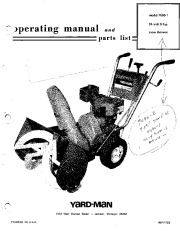 MTD Yard Man 7090 1 Snow Blower Owners Manual - 1 of 14
MTD Yard Man 7090 1 Snow Blower Owners Manual - 1 of 14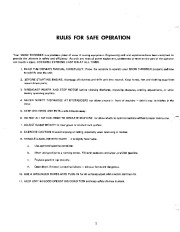 MTD Yard Man 7090 1 Snow Blower Owners Manual - 2 of 14
MTD Yard Man 7090 1 Snow Blower Owners Manual - 2 of 14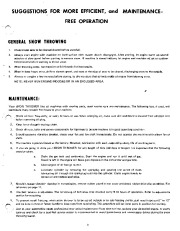 MTD Yard Man 7090 1 Snow Blower Owners Manual - 3 of 14
MTD Yard Man 7090 1 Snow Blower Owners Manual - 3 of 14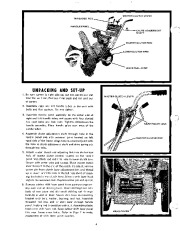 MTD Yard Man 7090 1 Snow Blower Owners Manual - 4 of 14
MTD Yard Man 7090 1 Snow Blower Owners Manual - 4 of 14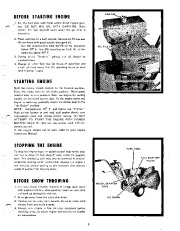 MTD Yard Man 7090 1 Snow Blower Owners Manual - 5 of 14
MTD Yard Man 7090 1 Snow Blower Owners Manual - 5 of 14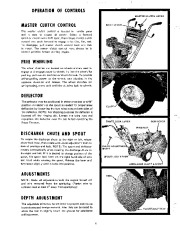 MTD Yard Man 7090 1 Snow Blower Owners Manual - 6 of 14
MTD Yard Man 7090 1 Snow Blower Owners Manual - 6 of 14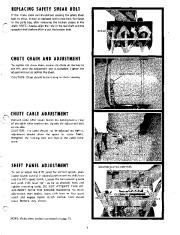 MTD Yard Man 7090 1 Snow Blower Owners Manual - 7 of 14
MTD Yard Man 7090 1 Snow Blower Owners Manual - 7 of 14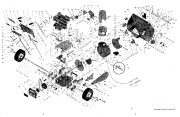 MTD Yard Man 7090 1 Snow Blower Owners Manual - 8 of 14
MTD Yard Man 7090 1 Snow Blower Owners Manual - 8 of 14 MTD Yard Man 7090 1 Snow Blower Owners Manual - 9 of 14
MTD Yard Man 7090 1 Snow Blower Owners Manual - 9 of 14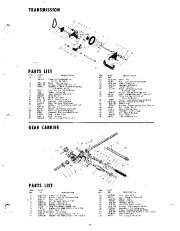 MTD Yard Man 7090 1 Snow Blower Owners Manual - 10 of 14
MTD Yard Man 7090 1 Snow Blower Owners Manual - 10 of 14